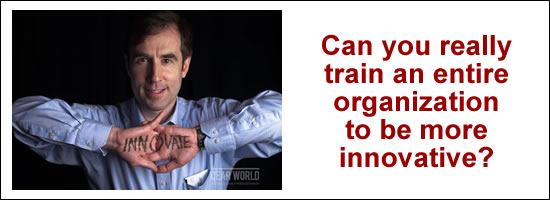 OK, it may not really be an innovation, but I appreciated the following operational efficiency anyway:
OK, it may not really be an innovation, but I appreciated the following operational efficiency anyway:
Going to check out of the Hilton New York City, there was a queue in spite of the several available kiosks and multiple employees staffing the counter to help customers with various requests. Hilton had obviously invested in some business process consulting (or possibly listened to an employee suggestion) because in addition to the kiosks and the employees staffing the counter, they had an employee staffing the line to identify the needs of guests while they waited in line.
In my case, she asked how my stay was and I told her the story about how I had difficulty with the WiFi not allowing me back into my work e-mail after the connection went down and came back up again. I told her that the first night it worked fine and that I expected not to pay for the second night because it didn’t work properly (leaving important time-critical messages stuck in my outbox). She was sympathetic, but I halfway expected to have to tell the story all over again when I got up to the counter (as this is the typical bad customer experience on the phone or in person). I was surprised and impressed when she told the counter person to take off the second night’s WiFi and that I was ready to check out. Thankfully, I didn’t have to tell the story again.
This is good operational practice for a couple of reasons:
- It gave them a way of increasing throughput during busy times when they would otherwise be limited by the number of computer workstations.
- It provided a good customer experience. I only had to tell the story once.
- I was on my way much more quickly as a result, and the counter person was on to their next customer more quickly as well
- The poor person behind me didn’t have to wait while I told my story again, and potentially argued with the counter person because this had already been taken care of while we were both waiting in line (except no arguing was necessary).
- If the customer has no special needs, the employee can direct the customer to an available kiosk.
This example, while more about good operational practice and customer service than innovation, does provide the opportunity to identify process innovation opportunities if we look at our own business through a lens of separating the customer experience into the following parts:
- Information Gathering
- Information Evaluation
- Information Processing
Are there times in your business when your customers are waiting? Why are they waiting?
Do you have certain resources that reach capacity quickly or for sustained periods during busy times that you can’t expand easily?
Is there a way to utilize that waiting time to separate out the information gathering or information evaluation components of a customer interaction, to allow for a division of labor that can be more easily flexed to accommodate demand spikes?
In a phone scenario, could you not implement an interactive voice response phone system that notifies the customer how long they can expect to wait and then transitions to a “While you are waiting…” message and then asks the customer for their name, account number, and phone number to either be played for the agent before transferring the call, or maybe even trying to do some kind of speech to text and facilitate a record-lookup using that information?
Maybe you need to allow your skilled people to focus on information evaluation and processing, while lower skilled people focus on information gathering. Or, maybe in your industry the skilled people are at the front end, focusing on information gathering and evaluation and need to be separated from the information processing tasks.
In a manufacturing environment, while we don’t talk about information gathering, evaluation, or processing, we still use the same logic to evaluate the overall system throughput. Then, break it down into components so that we can identify and manage critical constraints and manage them in a way that maximizes throughput.
So whether you are in a manufacturing or a service environment, are you constantly looking for ways to optimize throughput and maximize profits or customer service (or maybe even both)?
What are your favorite stories of process innovations that have led to improved customer service or manufacturing efficiencies?
P.S. Continue reading on this topic by reading – Followup – Following the Line to Innovation at Costco
![]() Sign up here to get Human-Centered Change & Innovation Weekly delivered to your inbox every week.
Sign up here to get Human-Centered Change & Innovation Weekly delivered to your inbox every week.
